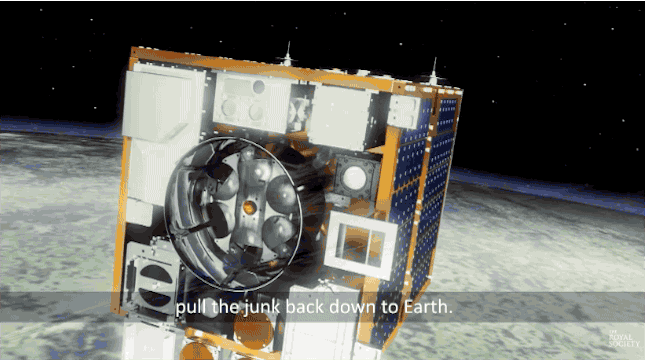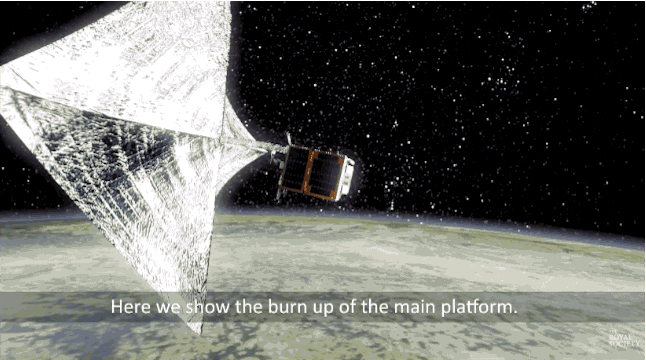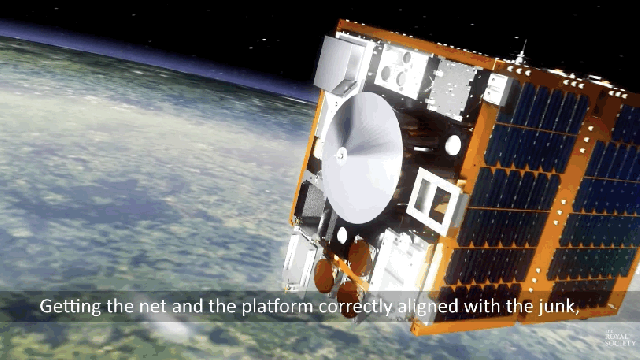It won’t be long now. In just a few short months, the long-standing debate — space harpoon versus giant butterfly net — will finally be settled by a good old-fashioned space garbage collection contest. We’ve got ourselves a barn-burner here, folks.
Surrey Space Centre announced that their space garbage collection mission, RemoveDEBRIS, is now set to launch by early next year. There are already plenty of technologies in the works to clean up the more than 6350 tonnes of rubbish that orbit the Earth, posing a collision hazard to both satellites and spacecraft. But the RemoveDEBRIS mission is the first time that a selection of those methods will get a test in space to see just how they stack up against each other in the contest to scoop up the most garbage.
In one corner, we have Space Net, which is essentially a big net designed to capture both big and little pieces of drifting garbage. In the other corner, we have Space Harpoon, which (just like it sounds) is a harpoon that will spear individual pieces of space garbage and reel them back in.
There’s also a third option, in which future satellites are given a drag sail, making them more likely to burn up in our atmosphere than join the Great Space Garbage Patch. But, come on, we’re talking space harpoons and giant nets here, so we’re going to spend a little less time worrying about adding drag-sails to future satellites and a little more time watching a space harpoon spear a piece of space garbage.
Observe this harpoon mock-up demonstration from a new exhibit on the mission by Surrey Space Centre currently on display with The Royal Society:

And the net:

Here’s the drag sail:

In its initial stages, RemoveDEBRIS will just be testing which of these three tools is the most effective method of garbage collection, not attempting any large-scale clean-up. Still, with over half a million pieces of individual space trash floating around in a terrifying vortex around our planet, the idea that any of it might finally be cleaned up is exciting.
Alas, this mission won’t be collecting existing rubbish. First, RemoveDEBRIS will throw new space garbage into orbit, and then it will try to pick it up. To get a better idea of the process, imagine a roadside pick-up crew that spends the first half of the day strewing soft drink cans along the highway, and then the next half going back to pick them up, one-by-one.
Of course, this does make the test more fair, because the harpoon, buoy and net are attempting to capture garbage of known sizes and shapes. Still, it’s a little disappointing to know that our first garbage-collecting spacecraft is, at least initially, going to be throwing down as much garbage as it picks up.
